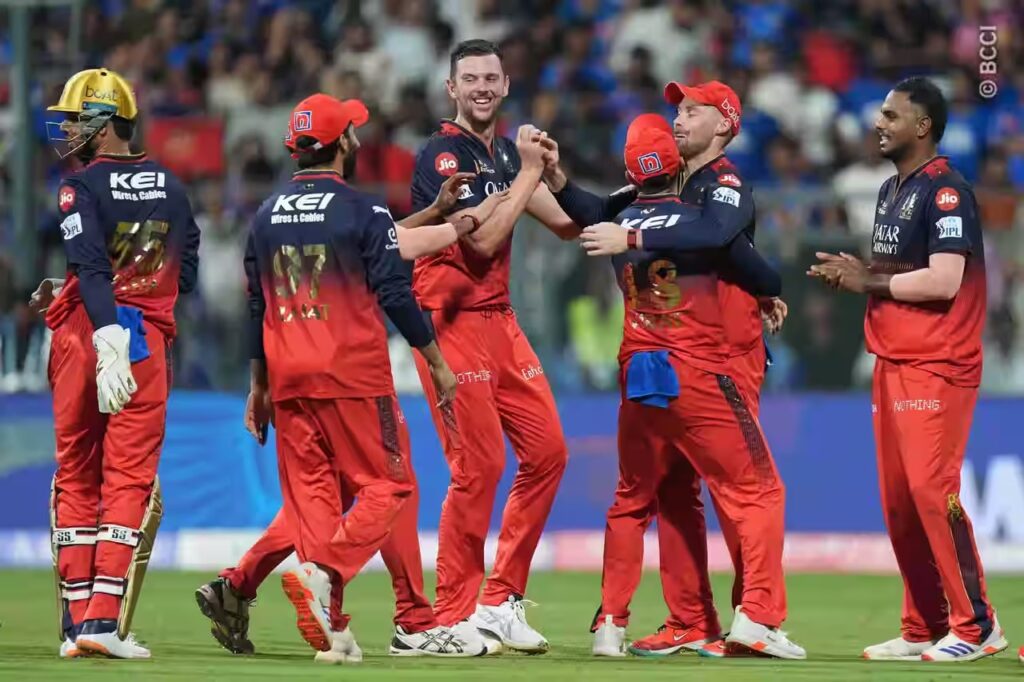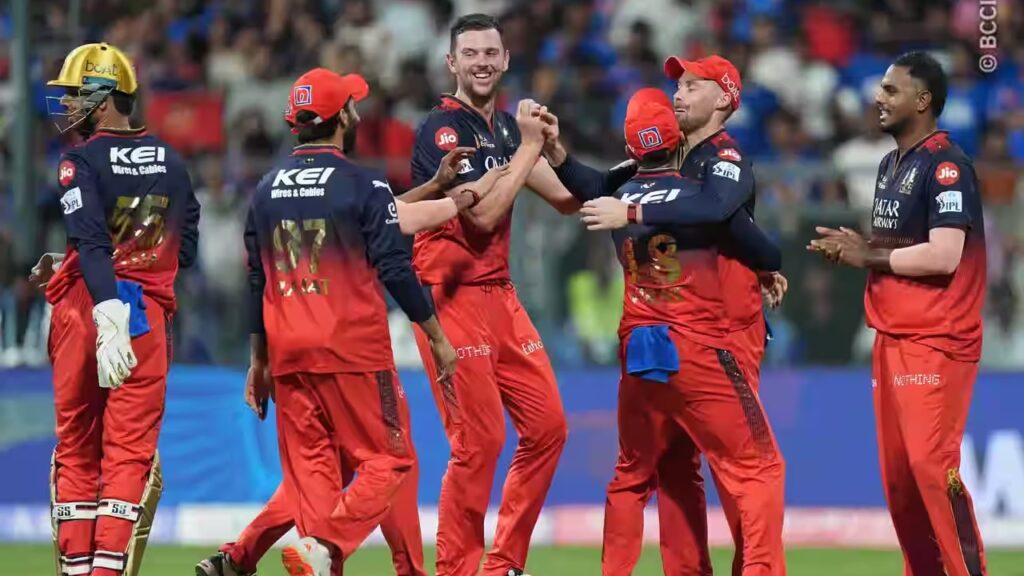
Royal Challengers Bengaluru have 12 points from nine matches and need to win two out of their next five to seal a playoff berth. They have been phenomenal in away matches this year, having won five out five on the road. Today, in just a few hours, they play their sixth away game of the season — against Delhi Capitals. A win would almost guarantee their spot in the playoffs.
What has worked for RCB this year?
Batting not top-heavy anymore
In the past few seasons, RCB’s runs largely depended on the openers and then a certain AB de Villiers at the death. Middle-order was a persistent concern, and after De Villiers’ retirement, the finishing became trickier. The entire burden often fell on Faf du Plessis and Virat Kohli to deliver, with Rajat Patidar emerging as a support act in recent years.
This season, however, the dynamic has changed. If Phil Salt and Kohli provide strong starts, the middle overs are solidly managed by Devdutt Padikkal and Patidar. At the finish, Tim David and Jitesh Sharma inject the necessary firepower. The team no longer leans excessively on any single batter, making the line-up far more resilient.
Bowling variety at last
Historically, RCB were a batting-heavy side with a fragile bowling unit. This imbalance meant batters were constantly under pressure to put up daunting totals, knowing defence of 140–150 would be near impossible.
This year, the attack, led by Josh Hazlewood and ably supported by Bhuvneshwar Kumar, Suyash Sharma and Krunal Pandya, has changed the game. Hazlewood has been exceptional at the death. Bhuvi and Hazlewood combined to deliver an astonishing 17 yorkers in the final four overs against Punjab Kings.
Pandya has showcased smart variations in pace, while Suyash has impressed with his control. RCB’s bowlers are no longer passengers — they are genuine match-winners.

Role clarity across departments
Whether in batting or bowling, every player seems to know exactly what their job is. Salt attacks from ball one, Kohli anchors until around the 12th or 13th over before accelerating, and if he falls early, Patidar steps into the pivotal role. Padikkal and Patidar attack through the middle overs, while Jitesh and David power through the death overs.
Bowling plans are equally crisp: Hazlewood, for example, is designated to bowl the 17th and 19th overs — and that has made all the difference.
The results of this clarity are striking: Salt (175.20) and Kohli (151.30) rank among the highest strike rates in the powerplay (minimum 150 runs scored). Hazlewood is joint-second for most wickets at the death in IPL 2025.
Also Read: Jitesh Sharma’s sharp eye behind the stumps: The unsung DRS hero in RCB’s resurgence
Rajat Patidar: The captain RCB needed
Patidar has impressed not only with the bat — scoring 222 runs in eight innings at an average of 27.75 and a strike rate of 148.99, with two fifties — but more importantly as a tactician.
His decision-making has been spot on. Against Mumbai Indians and Rajasthan Royals, he ensured Hazlewood bowled the 19th over, even when other bowlers had overs left. Both times, it proved critical to RCB’s victory. Against RR, after Kohli’s dismissal early in the 16th over, Patidar promoted David ahead of himself — another move that paid off.
His calm demeanour, sharp field placements, and smart bowling changes all suggest a captain mature beyond his years. Patidar is shaping into a leader the team can rally behind.
RCB looked like a formidable team on paper at the start of the season — and they have played like one. Solving the home jinx last game was a psychological boost. If they can defeat Delhi today, they will boast a perfect 6-0 away record and move a step closer to the playoffs.
Can RCB continue their surge or will DC pull off a double? Whatever happens, expect some raw Kohli aggression tonight, especially after the celebrations in Bengaluru following DC’s earlier win.
Also Read: India United Under Stadium Lights: In Hyderabad, Sport Rose Above Division




